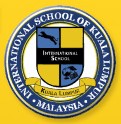International School of Kuala Lumpur (Secondary) in Ampang, Selangor, Malaysia
 Established in 1965, the International School of Kuala Lumpur (ISKL) was the first school with an American curriculum in Malaysia. It was also the first fully accredited international school in Malaysia. Over the years, International School of Kuala Lumpur (ISKL) has built its outstanding international reputation by balancing sound tradition for academic excellence with innovative approaches to teaching, learning and expanding technology.
Established in 1965, the International School of Kuala Lumpur (ISKL) was the first school with an American curriculum in Malaysia. It was also the first fully accredited international school in Malaysia. Over the years, International School of Kuala Lumpur (ISKL) has built its outstanding international reputation by balancing sound tradition for academic excellence with innovative approaches to teaching, learning and expanding technology.
International School of Kuala Lumpur (ISKL) is a private, not for profit, parent-governed school accredited in the United States through the Western Association of Schools and Colleges (WASC) and internationally through the Council of International Schools (CIS).
At International School of Kuala Lumpur (ISKL), learning does not stop with academics but encompasses social, emotional and moral development. The school offers a well-rounded educational program for their students to excel and lead well-rounded quality lives outside of the classrooms.
Its American-based curriculum and program covers:
Elementary School (Pre-Reception through grade 5)
Middle School (Grade 6 through Grade 8 )
High school (Grade 9 through Grade 12)
International School of Kuala Lumpur (Secondary) Academics
GRADE 6 CORE
Math
Math emphasizes mathematical modeling of situations from everyday life and other school subjects. Grade 6 Math is a continuation of the investigative learning approach of the elementary math program, with special emphasis on skill based learning. The course reviews and deepens the students’ ability to perform basic operations. The concepts of variables, algebraic expressions and equations are introduced early in the course and are reinforced throughout the year. Mental math, estimation and problem solving help the student develop critical thinking skills. This course follows a multi-text approach and utilizes sections from Heath, Dale Seymour and Glencoe text series.
Science
At each grade level, students study each of the following major science subjects: Chemistry, Physics, Biology and Geology.
They spend approximately one quarter on each subject. The level of complexity increases as students progress through grade levels.
Students work in lab groups and spend a majority of their time doing hands-on labs and activities. Technology skills are integrated into the curriculum when appropriate.
Science 6
Chemistry – What’s in my cupboard (Kitchen chemistry)
Physics – Positively electrifying (Electric circuits)
Biology – What goes here and why? (Classification)
Geology – Third Rock from the Sun (Planet Earth)
Humanities
Grade six social studies is driven by a structured inquiry process. This involves the students studying the growth and development of early humans then moving into theagricultural revolution. The next step is examining the growth of riverine civilizations. The final historical emphasis is looking at the city states of Greece and Rome.Skills and processes are developed through a variety of experiences such as research, mapping and projects, frequently integrating technology.
English in sixth grade focuses on reading, writing and speaking. In reading, students are engaged in independent, small group and class activities, which develop their active reading skills and understanding of the English language. The writing process is used in sixth grade and the students are given experiences in writing for different purposes. Formal and informal opportunities for students to develop their speaking skills are also incorporated into the English program.
GRADE 7 CORE
Math
Pre-Algebra weaves together three themes – applied arithmetic, pre-algebra and pre-geometry – by emphasizing connections within mathematics and to other disciplines, developing concepts through real world applications, and encouraging independent learning.
The Pre-Algebra program, usually completed in one year, builds on abstract math concepts as students solidify their concrete math skills. The primary text in Pre-Algebra is Mc Dougle Littell’s Passport to Algebra and Geometry. Students who successfully complete the Pre-Algebra program by the end of seventh grade will be prepared to enter Eight Grade Math. Accelerated students are able to take Integrated Math 1 in eighth grade.
Science
At each grade level, students study several of the following major science subjects: Chemistry, Physics, Biology and Geology. They spend approximately one quarter of the year on each subject. The level of complexity increases as students progress through the year. The scientific method is again emphasized as students learn to construct hypotheses and design experiments to test them.
Students work in lab groups and spend a majority of their time conducting hands-on labs and activities. Technology skills are integrated into the curriculum when appropriate.
Science 7
Physics – May the Force Be with You (Forces)
Chemistry – Mix It Up! (Solutions)
Biology – Growing Pains (Human Reproduction))
Physics – The Sky’s the Limit (Astronomy)
Humanities
Grade 7 Humanities integrates language arts and social studies. Students focus first on mythology as a continuation of the sixth grade study of Greece and Rome. Later units include an exploration of the major world religions and a historical focus on the Middle Ages and corresponding periods in other parts of the world. Students will also look at their own growth and change in the human development unit.
Language arts objectives woven throughout the seventh grade curriculum include communication, critical thinking and skills related to the appreciation and interpretation of literature. Particular emphasis is placed on the writing process and reading, speaking and listening skills throughout all units.
GRADE 8 CORE
Math
The Middle School offers two streams at the 8th grade level, Pre-Algebra (“Transition Mathematics”) or Math I. Transition Mathematics allows 8th graders to consolidate pre-algebra concepts begun in 7th grade and prepares them for Math I in the 9th grade. Students who exhibit mastery of the Pre-Algebra content by the end of 7th grade will take Math I in 8th grade and enter Math II in 9th grade.
Math 1
Algebra-Geometry-Statistics-Probability This is the first course in a series using the Houghton-Mifflin Integrated Mathematics I text. Through the frequent use of technology, students will discover the fundamental concepts of algebra, geometry, statistics and probability. Students will apply these concepts to practical and complex problems.
The algebra content of the course will develop proficiency in fundamental skills in algebra: computational rules, solving equations, inequalities, factoring, exponents and linear equations including graphs of lines. The geometry content of the course will develop a strong foundation of introductory of geometry: defining basic terms, triangle and polygon properties, congruence, similarity, areas, volumes, circles and transformations. The statistics content will introduce students to basic statistical measurements: presentation data, measures of central tendency and simple measures of spread. The probability content will introduce students to basic probabilities of a single event: theoretical and experimental probability, sets and Venn diagrams.
Science
At each grade level, students study each of the following major science subjects: Chemistry, Physics, Biology and Geology. They spend approximately one quarter on each subject. The level of complexity increases as students progress through grade levels. Students work in lab groups and spend a majority of their time doing hands-on labs and activities. Technology skills are integrated into the curriculum when appropriate.
Humanities
The Humanities program in Grade 8 combines the study of Social Studies and English, and is designed to prepare students for high school. Students are not grouped by ability, but participate in a demanding and rigorous course of study that follows human development from the Renaissance to the modern world. Works studied this year include: Daughter of Venice, by Donna Jo Napoli, Girl With a Pearl Earring, by Tracy Chevalier, Julius Caesar, by William Shakespeare, Freedom From Beyond the Sea, by Waldtraut Lewin, A Long Way From Home, by Maureen Crane Wartski, The Rabbit Proof Fence, by Doris Pilkington, Angela’s Ashes, by Frank McCourt, and Lyddie, by Katherine Patterson. These works are complimented by Social Studies texts (Heinemann) with different areas of focus.
GRADE 9 – 12
The International School of Kuala Lumpur (ISKL) high school program emphasizes the development of critical thinking, sound research techniques, the application of knowledge to new situations and global awareness. It includes grades nine through twelve with an optional year thirteen for students with special circumstances.
International School of Kuala Lumpur (ISKL) offers a university preparatory curriculum that challenges students to be responsible world citizens who think creatively, reason critically, communicate effectively and learn enthusiastically.
All students are required to take a core curriculum based on the five major academic areas of English, mathematics, science, social studies and foreign language. This core curriculum is enhanced by a variety of elective courses in fine arts, applied arts, computers and physical education. International School of Kuala Lumpur (ISKL) also offer elective courses in all academic areas. Some Advanced Placement courses are offered in major academic areas, fine arts and computers.
The high school also offers the prestigious International Baccalaureate (IB) program which is recognized as a university entrance qualification in more than seventy countries worldwide. Full IB Diploma recipients regularly receive advance standing or placement at U.S and Canadian Universities. International School of Kuala Lumpur (ISKL) also offers a variety of IB Certificates and Advanced Placement (AP) Courses that non-IB diploma students may earn for individual courses they choose to take.
At International School of Kuala Lumpur (ISKL), students can also enjoy a wide array of co-curricular activities including sports, clubs and student council to help them develop new skills and interests. As a member of the Interscholastic Association of Southeast Asian Schools (IASAS), the students participate in cultural, athletic, and academic exchanges with international schools in Jakarta, Bangkok, Singapore, Manila and Taipei. Dance, Drama, Forensics, Basketball, Soccer and Tennis are just a few of the events students participate in through IASAS.
The International School of Kuala Lumpur (ISKL) high school program offers students a unique educational experience which offers challenging academic programs and extra curricular opportunities designed to cater for the specific needs, interests, talents, and aspirations of students from a wide range of cultural backgrounds. The students are challenged, supported, and nurtured by experienced, highly qualified educators to achieve their full potential as young adults and future global leaders.
Location Map of International School of Kuala Lumpur (Secondary)
International School of Kuala Lumpur (Secondary) Contact Details
International School of Kuala Lumpur (Secondary)
Jalan Kerja Ayer Lama
Off Jalan Kolam Air, Ampang Jaya
68000 Ampang
Selangor.
Tel: +6(03)4259 5600
Fax: +6(03)4257 9044
